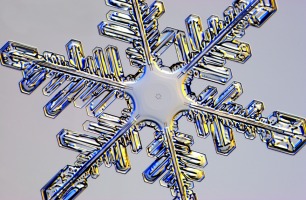 THE
MINERAL PERICLASE
THE
MINERAL PERICLASE
- Chemical Formula: MgO, Magnesium Oxide
- Class: Oxides and Hydroxides
- Uses: As mineral specimens and sometimes as gemstones.
Specimens
Periclase is sometimes used as a gemstone although it lacks good hardness and is generally limited in colors. Periclase is isostructural with halite, NaCl, which has simple cubic packing and produces cubic and octahedral crystals.
Periclase is relatively scarce and is found in marbles being formed from the dissolution of dolomite, CaMg(CO3)2 , into MgO-periclase, CaCO3-calcite and CO2-carbon dioxide. This dissolution takes place during metamorphism. If the periclase rich marbles are exposed to weathering the periclase easily alters to either brucite, Mg(OH)2 or hydromagnesite, Mg5(CO3)4(OH)2 - 4H2O.
The yellow brown and black colors of periclase are due to the presence of iron. Specimens of periclase can be very attractive as brightly lustered, smoothly faceted crystals projecting out of the otherwise formless rough marble host rock.
PHYSICAL CHARACTERISTICS:
- Color is colorless, white, gray, yellow to brown or black
- Luster is vitreous to adamantine.
- Transparency crystals are transparent to translucent.
- Crystal System is isometric; 4/m bar 3 2/m
- Crystal Habits include the typical cubes and octahedrons as well as rounded indistinct grains.
- Cleavage is perfect in three directions forming cubes.
- Hardness is 5.5
- Specific Gravity is 3.6 (slightly above average)
- Streak is white.
- Other Characteristics: Crystals may dull in humid air.
- Associated Minerals include brucite, dolomite, hydromagnesite, magnesite, spinel, chondrodite and forsterite.
- Notable Occurrences include Monte Somma, Vesuvius, Italy; Crestmore, California, USA and Nordmark, Varmland, Sweden.
- Best Field Indicators are crystal habit, luster, hardness, cleavage, associations and localities.





